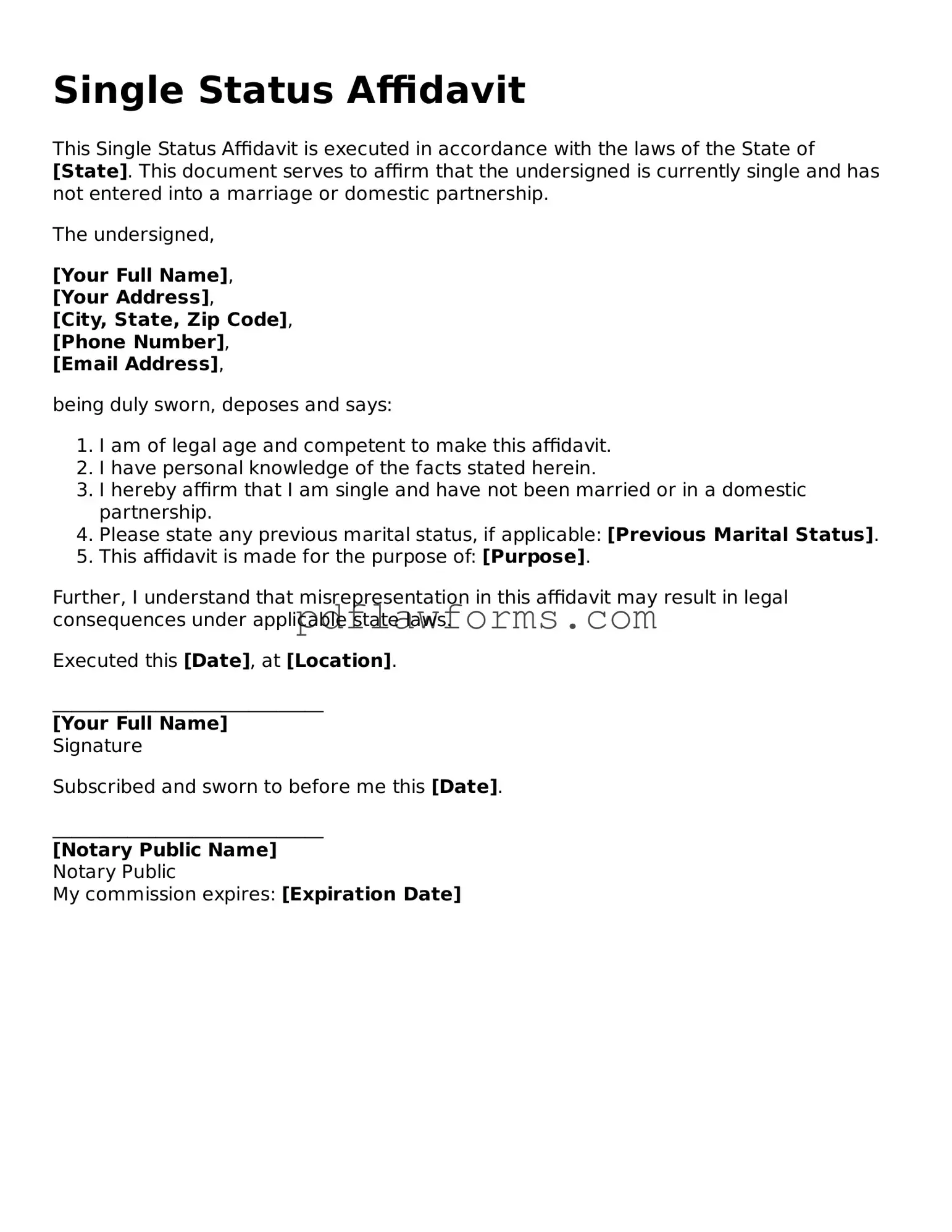The Single Status Affidavit form serves as a crucial document for individuals who need to affirm their single status, particularly when seeking to marry in a foreign country. This form typically requires the signer to declare, under penalty of perjury, that they are not currently married and are legally eligible to enter into a new marriage. It often includes personal details such as the individual’s name, date of birth, and sometimes information about their previous marriages, if applicable. Additionally, the form may need to be notarized to ensure its authenticity, as many jurisdictions require a notarized signature to validate the affidavit. Furthermore, individuals should be aware that different countries may have specific requirements regarding the format and content of the affidavit, necessitating careful attention to local laws and regulations. Completing this form accurately is essential, as it plays a significant role in facilitating the legal process of marriage abroad and helps prevent potential legal complications that could arise from misrepresentation.
